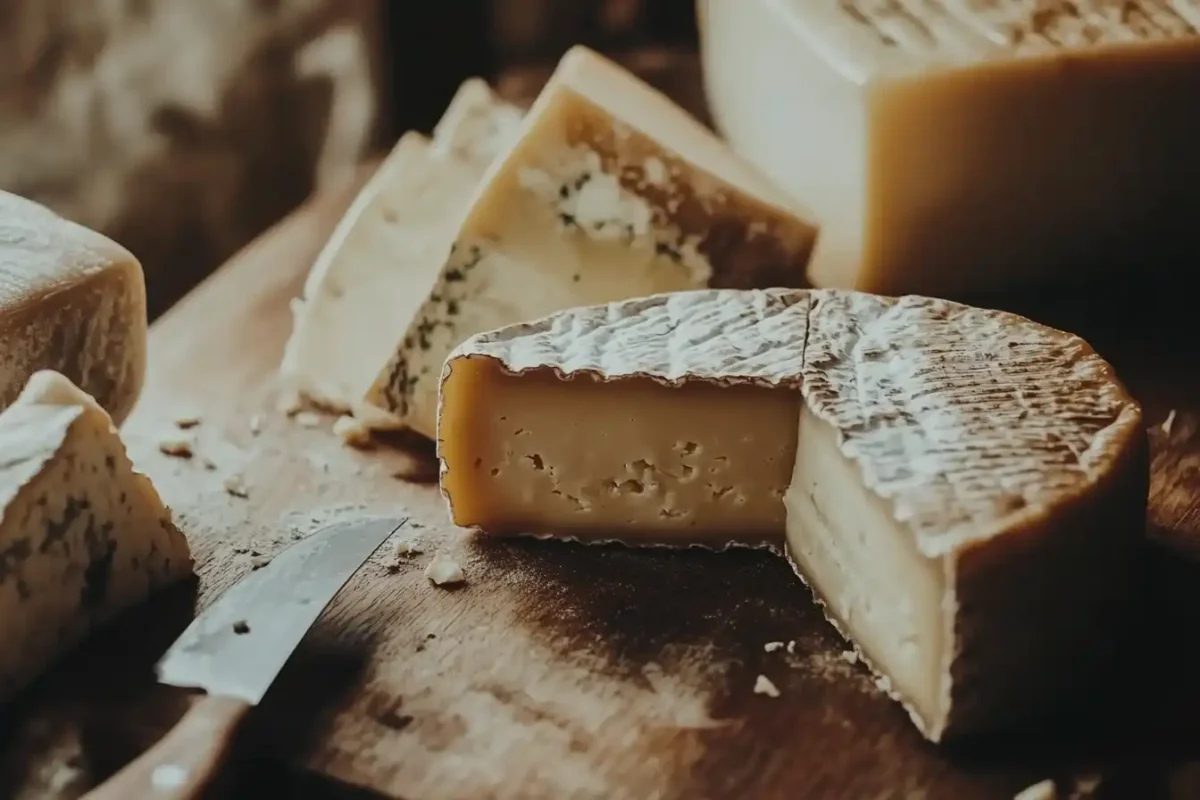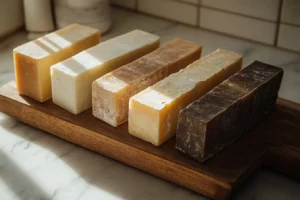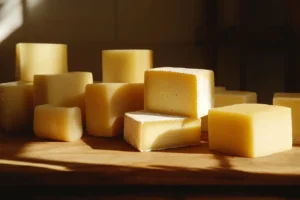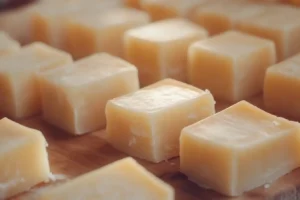What cheese is Gruyère similar to? It’s a question many cheese lovers ponder. This article explores Gruyère’s profile and suggests excellent substitutes. Furthermore, we will delve into their taste, texture, and usage. Specifically, we aim to help you find the best alternative for your needs.
Understanding Gruyère’s Unique Profile
Gruyère is a hard Swiss cheese. It is well-known for its nutty and complex flavor. It has a slightly sweet and earthy note, and it melts well. Therefore, it is a popular choice for cooking. Its smooth texture is another defining characteristic. Additionally, it’s often used in classic dishes.
Learn more about Gruyère cheese and its culinary uses for a deeper understanding of this versatile cheese.
Key Features of Gruyère Cheese
-
Nutty and earthy flavor, a hallmark of Gruyère.
-
Smooth, firm texture, ideal for various culinary applications.
-
Excellent melting properties, making it great for gratins and fondues.
-
Slightly sweet taste, adding depth to its complex profile.
-
Versatile in various dishes, from sandwiches to sophisticated recipes.
What Cheese is Gruyère Similar To? Key Alternatives Explored
If you are looking for a cheese similar to Gruyère, there are some excellent choices available. Specifically, several cheeses share its nutty flavor and good melting properties. These varieties make great substitutes in your recipes. Accordingly, they can provide similar results in dishes.
Emmental: A Classic Choice
Emmental is another Swiss cheese. Accordingly, it often gets compared to Gruyère. It has a milder, slightly sweet flavor. Moreover, it melts very well. Indeed, Emmental is a great all-purpose alternative, especially in dishes that require melting. Therefore, it’s a common choice when Gruyère is not available. Furthermore, it’s readily accessible in many markets.
Comté: A French Cousin
Comté is a French cheese. Comparatively, it shares a similar complexity with Gruyère. It offers nutty and fruity flavors. Additionally, it has a smooth texture. Thus, it works great in dishes that need a nuanced cheese taste. Basically, it’s a great substitute for Gruyere. Specifically, its flavor profile is very close to Gruyère.
Jarlsberg: A Sweeter Option
Jarlsberg is a Norwegian cheese. It has a mild, nutty, and slightly sweet flavor. Furthermore, it has large holes. However, it’s a bit softer than Gruyère. It is therefore a good option for milder dishes. For example, you could use it in sandwiches or gratins. Moreover, its texture is quite different but is suitable for many recipes. Ultimately, it’s a good choice for those who prefer a less intense cheese flavor.
Beaufort: Rich and Flavorful
Beaufort is a French cheese. Specifically, it is similar to Gruyère. It provides a complex, rich, and nutty flavor. It melts very well. While its flavor can be stronger, it works great in dishes where you want a more pronounced cheese taste. Ultimately, it’s a good choice for those who like a robust cheese. Indeed, its bold taste makes it an excellent option for complex dishes.
Raclette: Another Alpine Option
Raclette is a Swiss cheese. It’s known for its smooth melting properties and strong aroma. Its flavor is somewhat milder than Gruyère, but it still offers a nutty and slightly tangy profile. Therefore, it can be used in dishes where a melted cheese is the focus, such as a raclette dish itself or gratins. Additionally, its creamy texture adds a unique element.
Flavor Profiles: Comparing What Cheese Is Gruyère Similar To
-
Gruyère: Nutty, earthy, slightly sweet, complex, well-balanced.
-
Emmental: Mild, slightly sweet, nutty, less complex, more subtle.
-
Comté: Nutty, fruity, complex, smooth, with a hint of sweetness.
-
Jarlsberg: Mild, nutty, slightly sweet, softer texture, less intense.
-
Beaufort: Rich, nutty, strong, complex, with a bolder flavor.
-
Raclette: Nutty, slightly tangy, strong aroma, creamy texture.
Texture Comparison: What Cheese Is Gruyère Similar To?
-
Gruyère: Firm, smooth texture, consistent throughout the block.
-
Emmental: Firm, with some holes, slightly springy texture.
-
Comté: Smooth and firm, with a slightly denser texture.
-
Jarlsberg: Softer, with large holes, more pliable texture.
-
Beaufort: Firm and smooth, with a creamy feel when melted.
-
Raclette: Semi-hard, smooth and creamy when melted.
Melting Properties: A Key Consideration
-
All these varieties melt well. However, some may melt more smoothly than others. Gruyère, Emmental, and Comté are known for their smooth melt. Jarlsberg melts well, but it may be a bit more stringy due to its softer texture. Beaufort, with a good melt, can add a richer taste. Comparatively, Raclette has excellent melting properties and becomes creamy when melted. Therefore, considering the melting characteristic is important for specific recipes.
Culinary Uses and Applications
These cheese varieties are very versatile in cooking. Particularly, they can be used in a variety of dishes. For example, they can enhance gratins, sandwiches, and fondues. Specifically, their unique flavor profiles provide diverse options for cooking.
Baking and Gratins
-
Gruyère adds a nutty, complex flavor, making dishes richer.
-
Emmental offers a milder melt, suitable for lighter recipes.
-
Comté provides depth of flavor, enhancing the overall taste.
-
Jarlsberg gives a slightly sweeter touch, offering a different flavor.
-
Beaufort adds a bold, rich taste, perfect for those seeking a strong flavor.
-
Raclette brings a creamy texture when melted, adding an additional element.
Sandwiches and Paninis
-
Gruyère works great in a grilled cheese, adding a complex nutty flavor.
-
Emmental offers a mild flavor, suitable for everyday sandwiches.
-
Jarlsberg melts well, offering a slightly sweeter profile.
-
Comté adds a rich taste, perfect for more sophisticated sandwiches.
-
Beaufort gives a bold flavor, providing a unique sandwich experience.
-
Raclette offers a creamy, melted cheese experience when used in grilled sandwiches.
Fondues and Sauces
-
Gruyère is classic for fondue due to its melting qualities, providing a smooth base.
-
Emmental can be used to make fondue milder, suitable for those sensitive to strong flavors.
-
Comté can add complexity to a fondue, enriching the flavor.
-
Jarlsberg will melt, but it might be less complex in the taste of the fondue, best for simpler fondues.
-
Beaufort can add a rich flavor to sauces, ideal for those who enjoy bold taste.
-
Raclette creates a creamy, melted sauce, ideal for dishes where the cheese flavor is central.
Recipe Adaptations: What Cheese is Gruyère Similar To?
When substituting, keep in mind that each cheese has a unique flavor. Therefore, you might need to adjust the recipe a bit. Specifically, you may need to add more cheese if using a milder variety. Conversely, you may need less of a strong flavored option. Hence, recipe adjustments will vary.
Adjusting for Flavor Intensity
-
For a milder flavor, Emmental or Jarlsberg may be a good option, requiring more cheese to get the similar effect.
-
For a more intense taste, choose Comté, Beaufort, or Raclette, using smaller quantities.
-
Use a mix of cheese to get a balanced flavor profile, adding complexity to the recipe.
Tips for Smooth Melting
-
Grate the cheese finely for better melting, ensuring more even distribution.
-
Add a little bit of cornstarch to the cheese before melting to enhance smoothness, preventing separation.
-
Melt slowly at low heat to prevent separation, ensuring the cheese melts evenly.
Choosing the Best Gruyère Substitute
Ultimately, the best substitute depends on your needs and taste. Consider the following:
Taste Preferences
-
Do you like a strong, bold flavor? If so, Beaufort or Raclette might be your choice.
-
Or do you prefer a mild, sweeter taste? In this case, Jarlsberg or Emmental may be a better fit.
Recipe Requirements
-
Does the recipe need a cheese that melts very well? Then, Gruyère, Emmental, Comté, and Raclette are all good choices.
-
Or does it need a strong, complex flavor? If so, Beaufort or a well-aged Comté would be more suitable.
Availability and Cost
-
Some cheeses may be easier to find than others, depending on your location.
-
Prices may vary, therefore consider your budget when making a selection.
What Cheese Is Gruyère Similar To? A Recap
-
Emmental is a mild and good melter, suitable for general use.
-
Comté is complex and rich in flavor, a close substitute.
-
Jarlsberg is sweet and mild, good for those who prefer less strong cheeses.
-
Beaufort has a strong flavor and melts well, ideal for those who want a bolder taste.
-
Raclette has a creamy texture, and its melting ability is excellent.
Frequently Asked Questions
What cheese is most similar to Gruyère?
Comté is often seen as one of the most similar alternatives to Gruyère due to its comparable complex, nutty, and slightly fruity flavor profile. They also share a similar smooth texture and excellent melting properties, making them interchangeable in many recipes. Therefore, it’s often the first choice when looking for a substitute.
Can I use mozzarella instead of Gruyère?
Mozzarella is not the best substitute for Gruyère. While it melts well, it lacks the nutty, complex flavor. Mozzarella has a mild, milky taste. For recipes needing the specific taste profile of Gruyère, it is better to use alternatives such as Emmental or Comté. Consequently, you’ll get a flavor much closer to Gruyère using these alternatives.
Is Swiss cheese the same as Gruyère?
Swiss cheese and Gruyère are not the same, although they are both Swiss cheeses. Swiss cheese usually refers to Emmental or other similar cheeses with large holes. Gruyère is a specific type of Swiss cheese known for its smooth texture and nutty, complex flavor. Therefore, they are different in flavor and profile and cannot be used interchangeably in every recipe.
What does Gruyère cheese taste like?
Gruyère cheese has a unique taste. It is nutty and earthy, with hints of sweetness. It offers a complex flavor that many people find very satisfying. This complexity makes it a popular choice in cooking. Chiefly, it’s this flavor that makes finding a good substitute important. Indeed, the depth of its flavor is a defining feature.
Conclusion
Finding a cheese that matches the unique qualities of Gruyère can seem challenging. However, several varieties offer excellent alternatives. Emmental and Comté are especially close substitutes. Jarlsberg and Beaufort provide different flavor profiles that can also suit certain dishes. Raclette, with its creamy texture when melted, is another interesting option. Ultimately, the best choice depends on your personal taste and recipe needs. By exploring these different varieties, you can find the perfect substitute for your culinary endeavors.
Discover the difference between corn fritters and corn nuggets, which can be paired with cheese dishes for a delightful combination.
Understanding Other Similar Cheese Varieties
In addition to the primary substitutes discussed, there are other cheese varieties that share some similarities with Gruyère. These may not be perfect matches but can be considered if the primary options are not available. Specifically, exploring these options can broaden your culinary choices. Therefore, this section aims to introduce you to a few additional possibilities.
Appenzeller: A Swiss Option
Appenzeller is a Swiss cheese, similar in that it’s also from Switzerland. It is known for its slightly spicy and fruity flavor. However, it’s generally milder than Gruyère. Its texture is firm. Thus, it can be a good substitute in recipes where the cheese flavor doesn’t need to be the main focus.
Fontina: An Italian Choice
Fontina is an Italian cheese that’s known for its nutty and earthy flavor. It has a slightly softer texture. Moreover, it melts very well. While its taste is different than Gruyère, its melting properties make it a compatible substitute in many recipes. Additionally, it’s a good option when you’re looking for a different flavor profile but similar melt.
Gouda: A Dutch Classic
Gouda, a Dutch cheese, is very common. It ranges from mild to sharp in flavor. However, aged Gouda is known for its nutty and complex flavor, and it does melt well. It may be a satisfying substitute, especially in recipes that need a good melting cheese with a pronounced taste. Specifically, consider an aged Gouda if you’re seeking a more complex flavor.
How to Select a Substitute
When choosing a substitute for Gruyère, consider how the cheese will be used. Furthermore, pay attention to the flavor profile and melting properties.
Analyze Your Recipe
-
Is the cheese the star of the dish, or just part of it? Accordingly, this will determine if a complex flavor is needed.
-
Will the cheese be melted? Therefore, melting properties are critical for certain applications.
-
Do you need a strong or subtle flavor? Thus, this will guide your selection.
Consider Personal Preference
-
Do you like a strong, nutty flavor? If so, Beaufort or Comté are ideal.
-
Or do you prefer something milder and sweeter? Then, consider Jarlsberg or Emmental.
Accessibility
-
How easy is it to find the cheese in your local stores? Indeed, some options may not be readily available everywhere.
-
What’s your budget? Ultimately, the price will affect your selection.
Practical Tips for Substitutions
-
Start with a small amount: Use a small quantity when you first try the substitute.
-
Taste as you go: Taste your dish and adjust the cheese amounts as necessary.
-
Don’t be afraid to experiment: Different cheeses can produce different and enjoyable outcomes.
Final Thoughts on Cheese Substitutes
Finding a cheese that perfectly matches Gruyère might not be possible. However, there are many excellent cheese varieties that can provide similar tastes and textures. Therefore, by carefully considering your recipe, taste preference, and the properties of the cheese, you can make successful substitutions. Consequently, this will allow you to adapt your favorite dishes even when you don’t have Gruyère available. Ultimately, the goal is to find a suitable substitute that can enrich your culinary creations.




